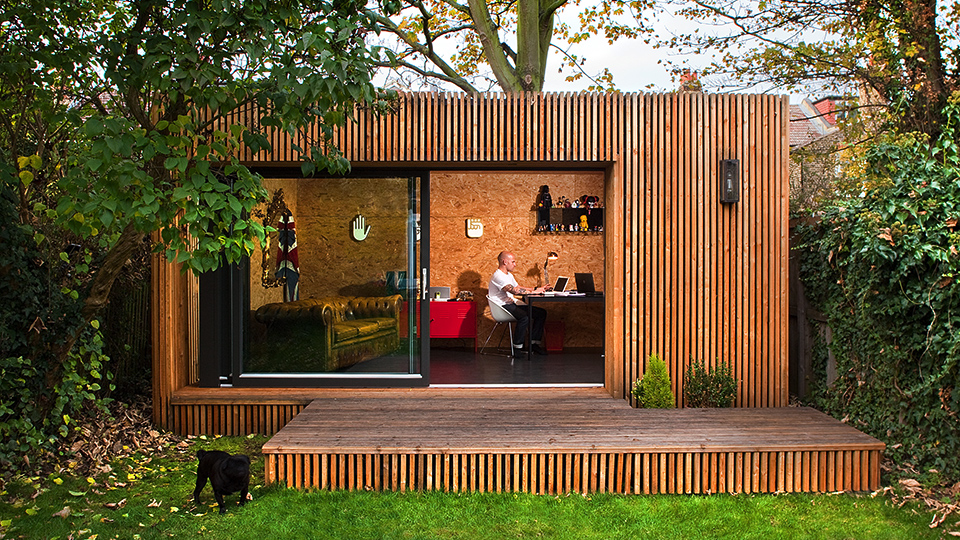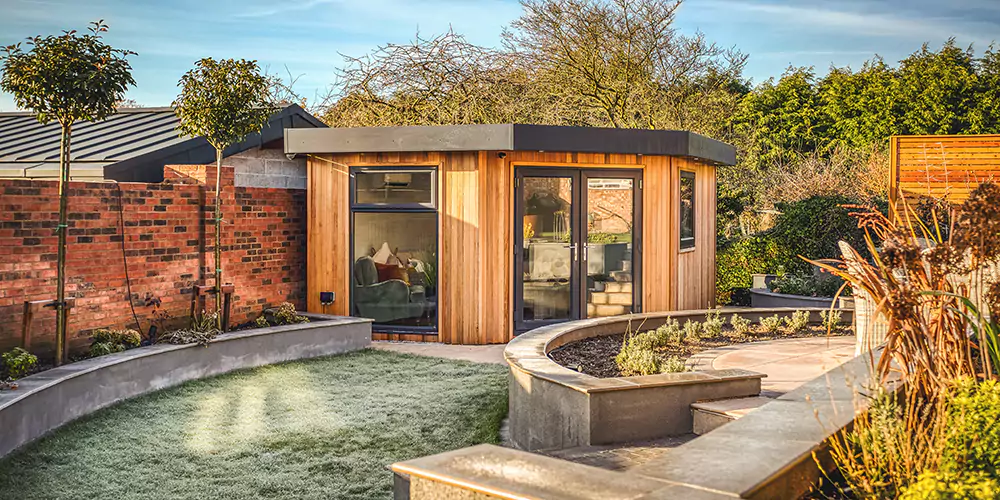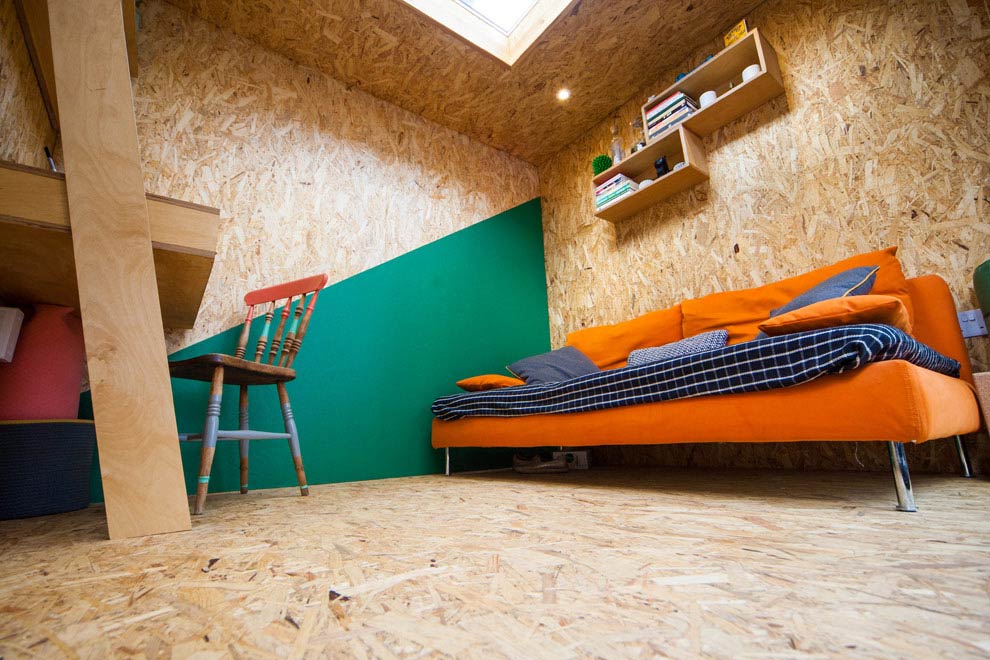Handy News On Planning Permission For Garden Extension
Handy News On Planning Permission For Garden Extension
Blog Article
In Conservation Areas, What Permissions Do You Need For Garden Rooms And Other Structures?
When creating garden rooms, conservatories outhouses, garden offices, or extensions within conservation areas, particular restrictions apply to preserve the character and appearance of the designated areas. Here are the main aspects to be considered when planning permission is needed in conservation zones:
Planning permission may be required for any building or extension that falls under the rights of permitted development in a conservation zone. This applies to garden sheds as well as other outbuildings.
Dimension and scale:
Any structure of any size could require approval for planning if they are deemed to affect the nature of the conservation area. Size and scale restrictions apply to new buildings and extensions, as compared to areas that are not designated.
Location of the Property:
Most likely, planning permission is required for any extensions or buildings located on the front or side of a home. Rear of buildings could be required if they are is visible from public spaces or if they affect the overall appearance of the property.
Materials and Design:
The design and selection of materials are important in conservation areas. It is essential that any building or extension, is constructed using materials that are in keeping with the historical or architectural importance of the location. These criteria will require approval for planning.
Demolition:
Planning permission is generally required in conservation zones to ensure that the modifications made are in keeping with an area's distinctive nature.
Height Restrictions:
There are stricter height restrictions in conservation zones. Any structure that is more than 2.5 meters in height (especially within 2 meters of the boundary line) is likely to require approval for planning.
The Impact on the Surrounding Environment:
Planning permission might be required when a proposed construction extension, addition or change to the setting or visual appeal of the conservation zone is likely to have a negative impact on its appearance and surroundings.
Building Use:
If a garden or outbuilding exceeds the dimensions however, it might still need planning permission based on its intended purpose (e.g. as an office, studio or a room that is habitable).
Extensions and Alterations
Planning permission is typically required for extensions that exceed the specified size or volume limits or that alter the exterior appearance. This includes conservatories as in other significant changes.
Curtilage Structures:
In a conservation zone or within the boundaries of a listed property need approval from the planning department. This includes expansions, outbuildings or changes.
Trees that are protected:
Trees within conservation areas are protected. The consent for tree works could be required if you are planning a construction which will impact trees.
Local Authority Guidelines
The local authority for planning may set specific guidelines or restrictions in every conservation zone. They could include specific guidelines on what is permitted and what's not, tailored specifically to the specific features of the region.
In short, getting planning permission in an area designated as a conservation zone requires an extensive evaluation of how a proposed garden room or conservatory, an outhouse, garden office, or extension could affect the architectural and historic characteristic. A prompt consultation with the local authority for planning is vital to ensure that the project is in compliance with all guidelines and regulations. Check out the best garden home cinema for site recommendations including costco garden buildings, outhouses, armoured cable for garden room, garden room conservatory, costco outbuildings, outhouse builders, garden rooms in St Albans, what is a garden room, garden room, composite garden office and more.
What Is The Neighbourhood Planning Permission To Garden Rooms, Etc.?
If you are planning to build conservatories, garden offices outhouses, or garden offices, the concerns from your neighbors will decide whether you need planning permission. These are the main aspects to consider privacy and overlooking:
Planning permission may be needed in the event that the construction will result in a loss of private space. It is essential to ensure that the structure is not affect the nearby residents.
The loss and shadowing of light
Planning approval is required when the proposed development could result in an overshadowing effect or a decrease in light from a neighboring property. The local planning authority will assess the impact of daylight and sunlight to adjoining houses.
Noise and Disturbance
The planning permission is needed for the use of the extension or garden room when there is a lot of noise (such the use of a home office with clients or an workshop. It will ensure that the noise level aren't going to affect the surroundings.
Visual Impact and Character
The design and size must match the character of the neighborhood. Planning permits ensure that the new development doesn't affect the aesthetics of the neighborhood and is acceptable visually.
Boundary Proximity
Constructions located within two meters of a boundary or any structure that is higher than 2.5 metres could require approval for planning. This is in order to settle any possible disagreements or affects on neighbouring properties.
Shared access and Rights of Way
The planning permission is needed if the construction could impact the shared access points or right of way. This ensures that they will not be negatively hindered or blocked.
Objections From Neighbors
The right to consult with neighbors is an essential part of the planning process. If there is opposition from neighbors, the planning authority will be able to consider the concerns of neighbors when deciding whether to approve the application.
Impact on the value of property:
While it is not always the main aspect, any major changes to the surrounding homes which could impact their property values may affect the necessity of an approval. Local authorities will take into account the effect on property values of these modifications when making their decision.
Covenants and Deed Restrictions:
If you are the owner of a covenant or deed restriction on your property, it could require you to adhere to them regardless whether planning permission is granted. These legal agreements can define what may and cannot be constructed, affecting the harmony of the neighborhood.
Construction Disturbance:
A planning permit can address concerns regarding the disruption created during construction including noise, dust, or traffic. The conditions could be set to minimize the impact on neighbors.
Impact of Infrastructure
Planning approval is required if the new structure will place more strain on infrastructure in the area, such as parking, drainage and road usage.
Consultation with the Community
A wider consultative approach with the community might be needed in certain instances especially for major or controversial projects. This will allow for an more democratic process of decision-making which takes into account the views of the local community.
In short, concerns about the neighborhood are important when deciding whether the construction of a conservatory, garden room, outhouse, garden office or extension is approved. To make sure that the proposed development doesn't have a negative impact on the quality of life, privacy, lighting, noise levels and the character of the neighbourhood, it's important to check the plans. Consultation with the neighborhood planner and involving neighbors early in planning can resolve these issues and help facilitate more easily granting approval. Follow the most popular london garden room for more recommendations including outhouse garden, out house for garden, gym outhouse, garden out house, garden rooms hertfordshire, outhouses for garden, best electric heater for cabin, my outhouse, garden rooms near me, conservatories and garden rooms and more.
Restrictions On Location: What Permits Do You Require For Garden Rooms As Well As Other Structures?
Planning permission may be required for conservatories, garden rooms and outhouses. These are the most important factors to be considered when determining the location proximity to boundaries:
Any structure within 2 meters of the boundaries cannot exceed a height of 2.5 meters. If the building's height exceeds this amount, then planning permission is needed.
Front of Property:
The development rights granted by the permit do typically not allow extensions or forward-facing structures.
Right-hand side of the property:
Side extensions must comply with certain height and size limitations and require planning permission often when they are larger than the sidewall of the home.
Back of the Property
The height and size of garden extensions and rear rooms to the rear of the house is restricted. Planning permission is required when these extensions exceed the permitted building limits.
Designated Areas:
The stricter controls are enforced in conservation areas, Areas of Outstanding Natural Beauty, National Parks and World Heritage Sites. Planning permits are required for any new structure, regardless of their dimensions.
Listed Buildings:
The properties that are listed as listed have more strict regulations. Planning permission and listed-building permits are usually required to build the new structure or to alter the existing structure, no matter the location within the property.
Green Belt Land:
The building of green belts is strictly prohibited to protect open space. A special permission is often required for new construction or major modifications.
Zones at risk of flooding
In the event that the property is located in an area that is at risk of flooding, there are additional regulations to ensure that the new construction doesn't increase the risk. It is possible to obtain planning permission or a flood assessment.
Urban vs. Rural Settings
Urban areas typically have different rules from rural ones. For instance, rural homes may have more lenient limitations on the size and placement of outbuildings, however, this isn't the case for all.
Highways and Public Rights of Way
If the structure is situated close to highways, roads, or public right-of-ways, the approval of the planner may be needed in order to prevent the structure from hindering views, safety, or accessibility.
Shared Ownership and Leasehold Land
In the case of properties which are part or leasehold or share ownership schemes, you may need to seek additional permissions whether from the managing entity or freeholder or planning permission depending on your local regulations.
Adjacent to Other Structures:
A permit for planning might be required to make sure that the new structure does not cause harm on existing structures and other buildings within the area like those on adjacent property.
Always consult with your local planning authority to receive advice specific to your property and its location. Regulations may differ significantly depending on local laws and the need to ensure that you comply with all applicable restrictions is essential to avoid legal problems and potential penalties. Have a look at the top cedar garden office for blog info including outhouse builders, Tring garden rooms, garden room vs extension, outhouse buildings, how to get power to a garden room, costco garden buildings, out house, garden office hertfordshire, composite summer house, best heater for log cabin and more.